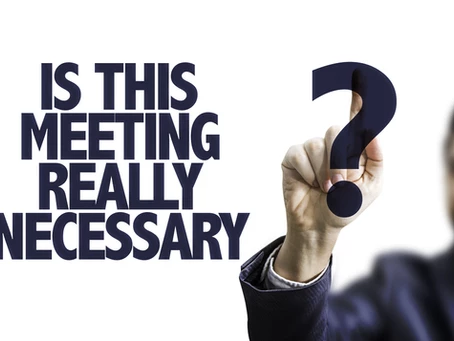Open your calendar. If you can’t see any gaps in your week and you have to block out time just to get a sandwich for lunch, then you’re probably living the meeting culture dream. Except that it’s not a dream, it’s a nightmare. When are you supposed to have a bathroom break, let alone get any ‘actual work’ done?
So, you decide to follow the craze and get rid of all your meetings, replacing them with a single daily 5 minute ‘stand-up’, or a daily mini meeting to cover everything instead. In theory this is a great idea. The problems start when that 5 minute meeting takes 45 minutes, an hour, or even half the morning. This is a common issue and is easily rectified!
The key to making this work for you is structure. It’s best to keep it as simple as possible. Go for these three headings to start with (you can improve them later if you wish):
1) People
2) Performance
3) Continuous Improvement
People
The work you do may involve only 2 people, or it may involve 20. Either way, it’s important to know who is available to work on what and when. This becomes increasingly more important when you’re working in agile teams that often require resources that shift from one project to another very quickly. Just having people’s availability for work visible here can save time when it comes to getting actions done. Whilst it takes some initial upfront preparation to ensure availability is accurate, this section is really just for information and can take less than 1 minute to go through in your 5-minute meeting. Time allotted: 1 minute
Performance
In this section, you would discuss the work that you are doing with your team. Creating a set of Key Performance Indicators (KPI) is a great way to see how you’re doing as a team towards your goals. If your project is agile, the KPIs could be mapping the progress of your sprint. In other project work or even day-to-day tasks, the KPIs could be tracking your progress against your overall objectives, progress against key actions for the week or even whether or not your stakeholders are happy with your work.
Providing a colour status is the easiest way to manage the KPIs visually, especially when you’re updating these them at different frequencies, i.e. daily, weekly, or monthly. Ideally you would have KPIs that are updated very simply on a chart daily so that you can monitor progress in real-time. Use green to show that you are on track and meeting objectives, and red to show that you are off track and need some support. If a KPI is green, then great! But better to spend your valuable couple of minutes to go through the reds, asking key questions like why are we off track and what support do we need to get this KPI back on track and therefore our work back on track?
Time allotted: 2 minutes
Continuous Improvement (CI)
As a lean ambassador, and generally someone who loves a good all round efficient process, I love feedback. The last couple of minutes of the meeting are prime for giving everyone a chance to share and feel listened to. Seek to understand what concerns your team members have, why have they got these concerns and discuss what we can do differently as a team to address them. It’s often these final two minutes that can turn a team who is at loggerheads every day into a high performing one that just flows. Time allotted: 2 minutes
It is also worth bearing in mind that the meeting should be easy to run by anyone in your team. It therefore requires a succinct set of questions that really get to the heart of what you’re hoping to get out of the meeting. Once you have created your visual meeting documents that are relevant to your work (in People, Performance and CI) then these questions should be easy to form.
Be visual. This type of meeting works best when you have a common workspace that you all physically share. Ideally it would be up on the wall where you are working together and visible for everyone to see clearly where you are working well together as a team (green) and where you can improve as a team (red). For those that are tech savvy it can be done remotely, but do factor in additional set up time and potential audio/visual issues. It’s also a lot harder to get people to focus over the phone or on a conference call, so try to make this a physical meeting if you can.
Now, I’m not saying that as soon as you get this implemented and up and running that it’s going to be a quick efficient five minute meeting straight away. It is an art form running meetings well, especially one that is only five minutes long. But it is possible and like everything worth doing, it just requires practice (and if you’re brave enough – an intolerance for lateness and waffle!).
Once you have fine-tuned your documents, made them easy to update and created an agenda that asks the right questions of those attending, you will be on your way to a more productive and efficient meeting life.
If you are interested in some example five minute meeting templates, please connect with me through LinkedIn and I’d be happy to share them with you.
Let me know how you get on!
Best of luck,
Selda

